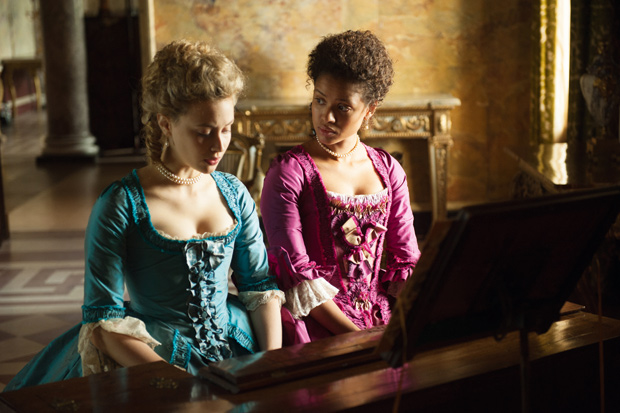Belle is based on the true story of Dido Elizabeth Belle, the illegitimate, mixed-race daughter of a sea captain and his African slave mistress, who was brought up as a free gentlewoman by her great uncle, Lord Mansfield, at Kenwood House, Hampstead, in the 18th century. How fascinating, you might think. You just can’t mess up with a story like this, you might also think. It has everything going for it; a costume drama fulfilling all our beloved Jane Austen tropes (class, gender, etc.) with the added charge of race. How could it go wrong? Alas, all too easily. This is disappointingly lifeless, and shallow, and the soundtrack! So many violins, you’ll leave feeling as if you’ve been quite violently smacked around the head with one. Repeatedly.
This is written by Misan Sagay, who was inspired after seeing Johann Zoffany’s painting of Dido with her cousin, Lady Elizabeth Murray, which now belongs to the current Lord Mansfield, and hangs in Scone Palace, Scotland. This is a painting I have been familiar with since childhood as I grew up near Kenwood, and have just always known about it somehow. I can recall it from memory. There is Elizabeth, who is white and attired in a pink frothy frock, gazing out passively while, just to the right, stands Dido, who is carrying exotic fruit, wearing a turban adorned with a feather, and has a vivacious glint in her eye. The pair are presented as equals, with Elizabeth laying an affectionate hand on Dido’s waist. I do not think you can look at this painting without asking the questions Sagay must have asked: who was Dido? How was she treated, as a black woman in high society? What became of her? Because so little is actually known, much of this film is conjecture, but it is not high-class, believable conjecture.







Comments
Join the debate for just £1 a month
Be part of the conversation with other Spectator readers by getting your first three months for £3.
UNLOCK ACCESS Just £1 a monthAlready a subscriber? Log in